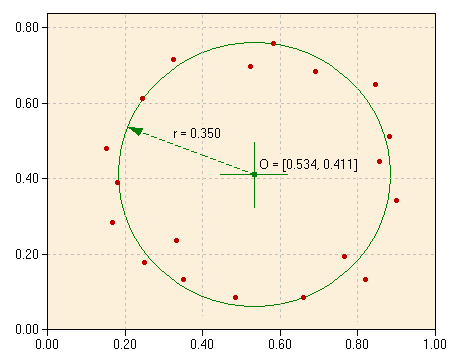| VIAS Encyclopedia provides a collection of tables and definitions commonly needed in science and engineering. |

|

Home  Mathematics Mathematics  Varia Varia  Error Surface Error Surface |
|






|
|
Error SurfaceAn error surface is a (p+1)-dimensional surface representing the error terms of a model depending on p parameters. The coordinates of the error surface consist of the p parameters of the model function and the error term (this space is sometimes called the phase space). The error surface can be used to find the best fit of a model simply by searching the mimimum of the error surface. Example: Try to find the best fit of a circle to a set of data points
Error surfaces can be quite simple (as in the case of linear regression), or extremely complex (as e.g. for multimensional non-linear problems). In any case, one can use optimisation methods to find the minimum of the error surface (and thus solve the underlying problem).
|
|
Home  Mathematics Mathematics  Varia Varia  Error Surface Error Surface |
|
Last Update: 2004-11-25


